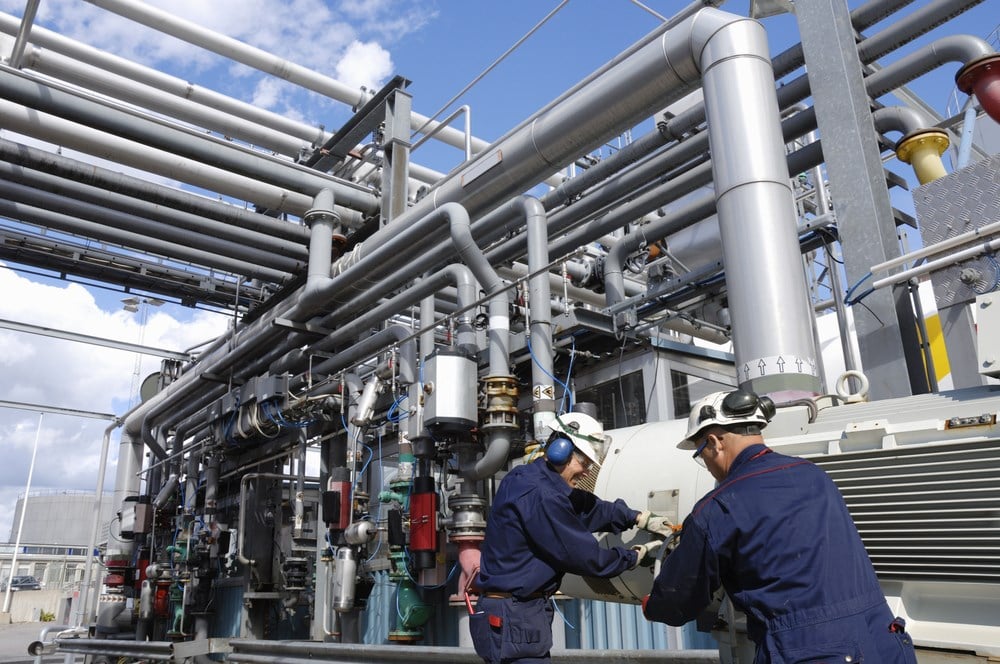
The energy sector was leading the market on August 17, while eight of the 12 S&P sectors traded lower.
Among the gainers were oilfield services providers Schlumberger Ltd. (NYSE: SLB) and Halliburton Co. (NYSE: HAL), both of which have come on strong in the past three months.
A related segment of the industry consists of oil-and-gas machinery and equipment makers. In the S&P 500, Baker Hughes Co. (NYSE: BHI) was also showing gains.
Baker Hughes also provides products and services for oilfield drilling, but in a testament to how the energy industry is changing and becoming more sophisticated, Baker Hughes bills itself as “an energy technology company.”
Three smaller companies that also specialize in oilfield equipment, services and technologies are showing bullish chart action, combined with estimates for triple-digit earnings growth.
Weatherford International plc (NASDAQ: WFRD)
Shares of the Houston-based provides oil and gas drilling and production services. returned 49.63% in the past three months and 66.44% year-to-date, outpacing larger companies.
If you look at the Weatherford International chart, you can see the stock overcoming resistance above $70.18 on July 10, and continuing to rally. Shares are up 11.75% in the past month, even as the stock has been pulling back, while continuing to find support above key moving averages.
In its most recent earnings report, on July 25, the company easily topped last year’s income and revenue. MarketBeat’s Weatherford International earnings data show the company missed on the bottom line, but beat on the top line.
That earnings miss didn’t dissuade buyers, though, as the stock rallied to a new high on August 9, before retreating in tandem with the broader market.
For the full year, Wall Street expects the company to earn $5.08 per share, an increase of 491%. That’s expected to rise by another 39% next year.
Archrock Inc. (NYSE: AROC)
The Houston company specializes in providing natural gas contract compression services and equipment for oil and gas production, processing, and transportation, as well as support for energy infrastructure.
Archrock is definitely not the new kid on the block, having gone public in 1997, but it’s still a small company, with a market capitalization just shy of $2 billion.
According to the company, it has a pure-play focus on midstream natural gas compression, providing outsourced compression services and aftermarket services across all major U.S. oil and gas basins. It’s active throughout the U.S., with a particular focus on the Permian Basin, the Gulf Coast, and nearby regions such as Oklahoma and New Mexico.
The company reported earnings on July 31, resulting in a breakout from a base with a buy point of $12. The stock’s recent returns are:
- 1 month: 24.42%
- 3 months: 36.09%
- Year-to-date: 45.49%
Archrock’s chart shows the stock trading in a fairly narrow band, well above key moving averages. A current buy point would be above $13.26. Watch for the stock to continue holding at or above moving averages, such as the 21-day or 50-day lines.
Analysts expect earnings to grow by 129% this year and another 23% next year.
TechnipFMC plc (NYSE: FTI)
U.K.-based TechnipFMC, formed from a merger in 2017, offers services to the oil and gas industry including subsea systems, surface technologies, and project management for both offshore and onshore operations. It also offers consulting and risk-management services.
This is one of those stocks that most investors aren’t familiar with, but it has a lot going for it. It’s a mid-cap, with a market capitalization of $7.885 billion, meaning it’s more likely to notch big gains than larger companies in its industry, over time.
The company has notched a three-month increase of 34.15% and a year-to-date gain of 50.45%.
It’s also a dividend payer, which you’ll see more often at small and mid-size non-U.S. companies than you will with domestic mid-caps. The Technip FMC dividend yield is 1.11%.
MarketBeat’s TechnipFMC analyst ratings show a consensus view of “moderate buy,” with a price target of $20.56, an upside of 14.24%.
Wall Street expects the company to pivot back to profitability this year, after losses in the past three years, with forecasts calling for net income of 45 cents a share. Next year, that’s expected to increase to $1.07 per share, a gain of 139%.












